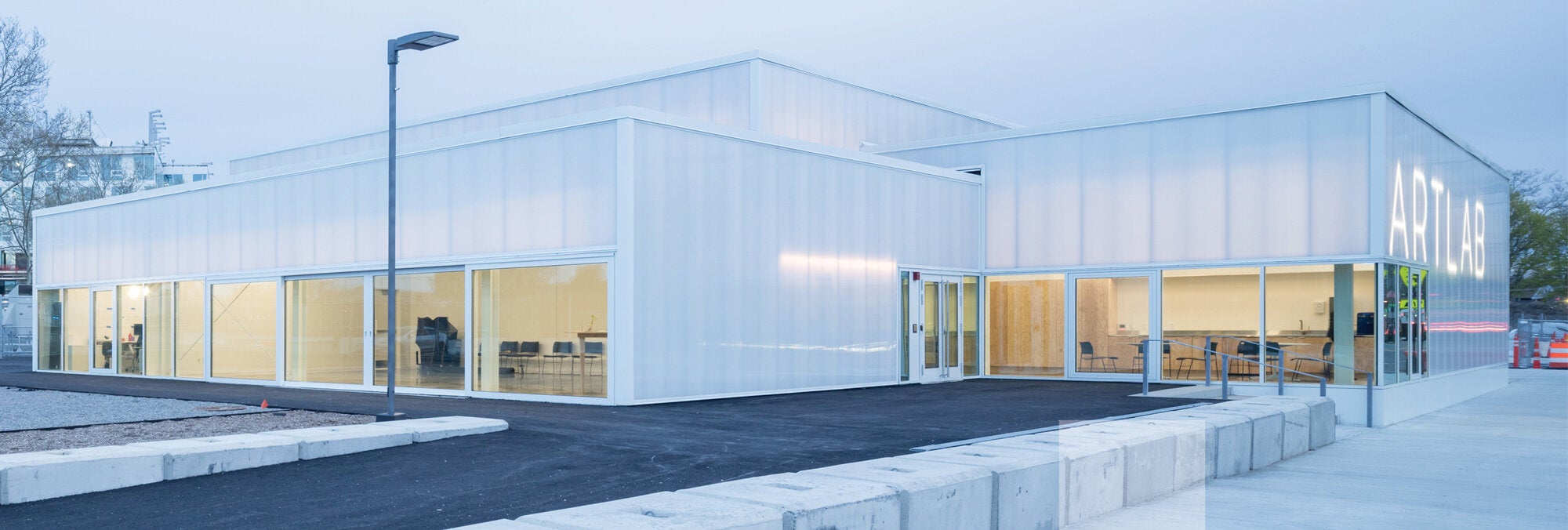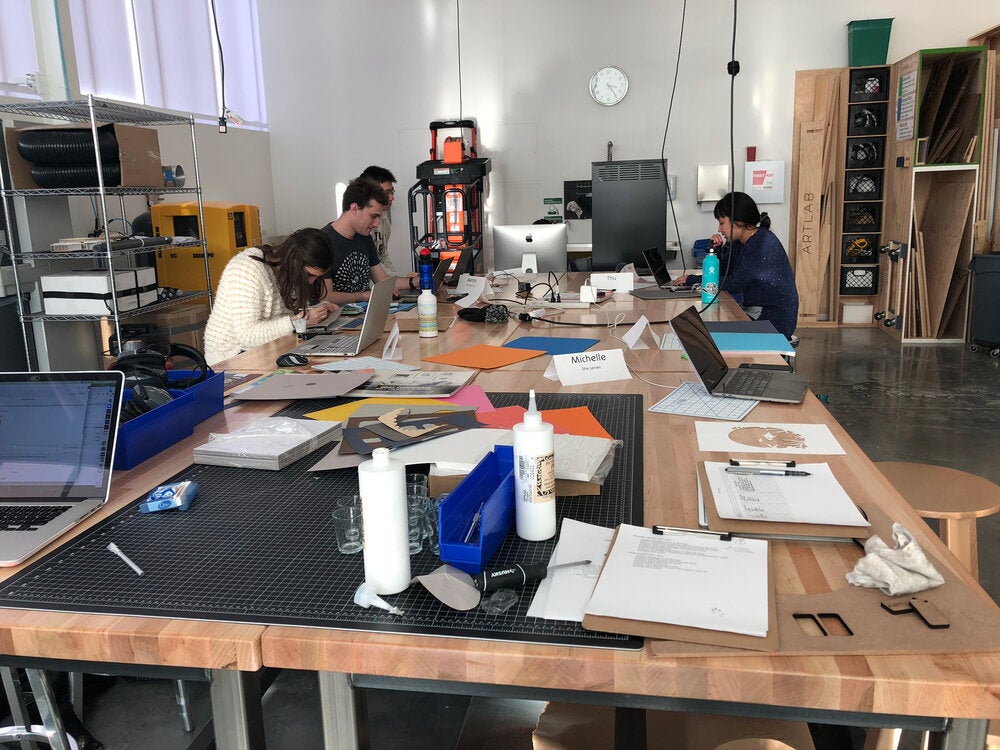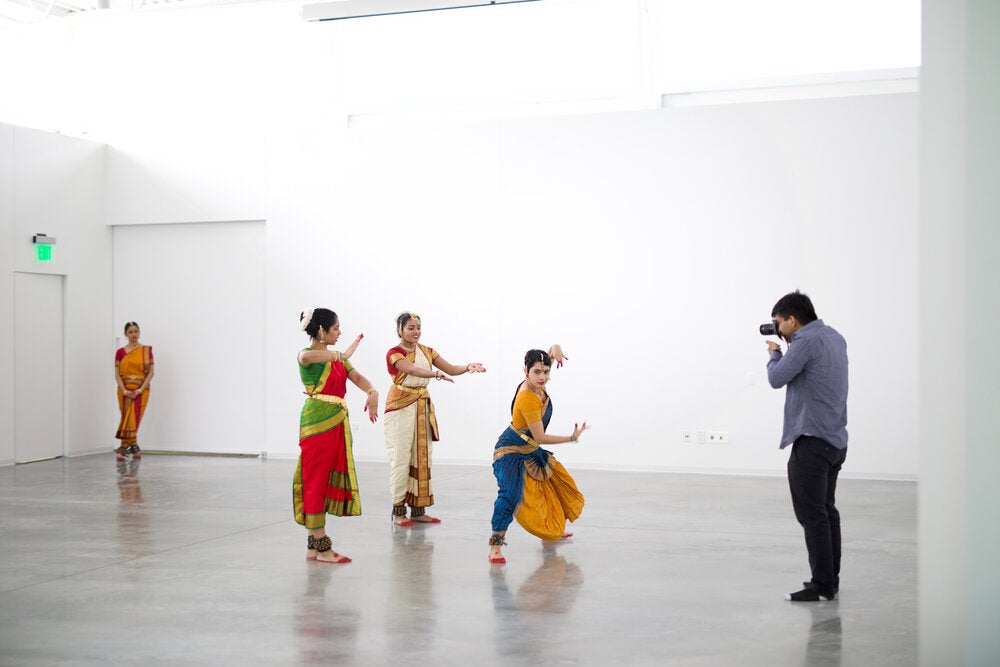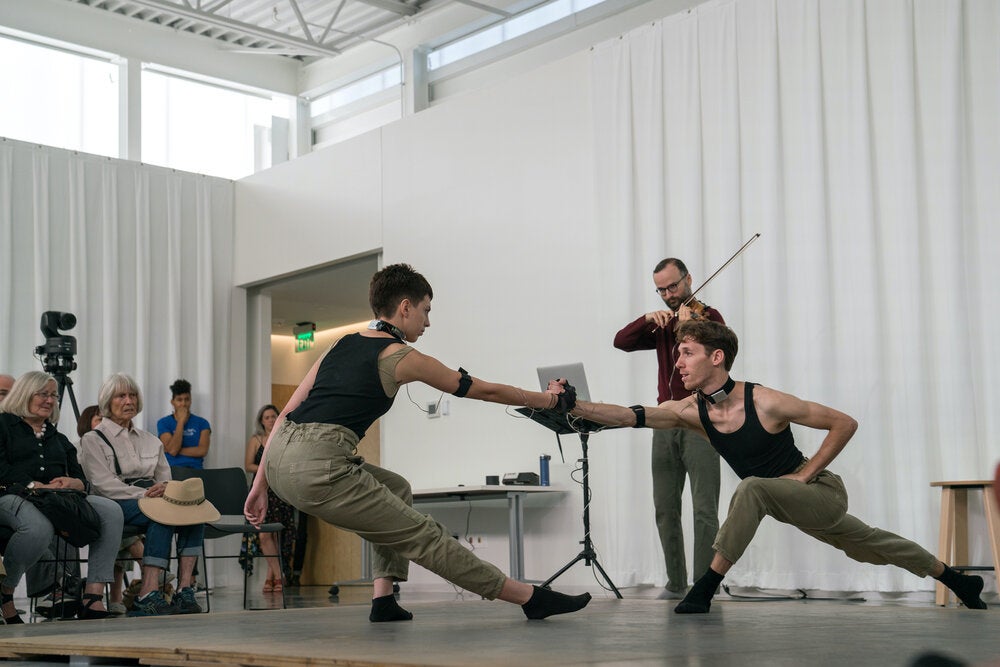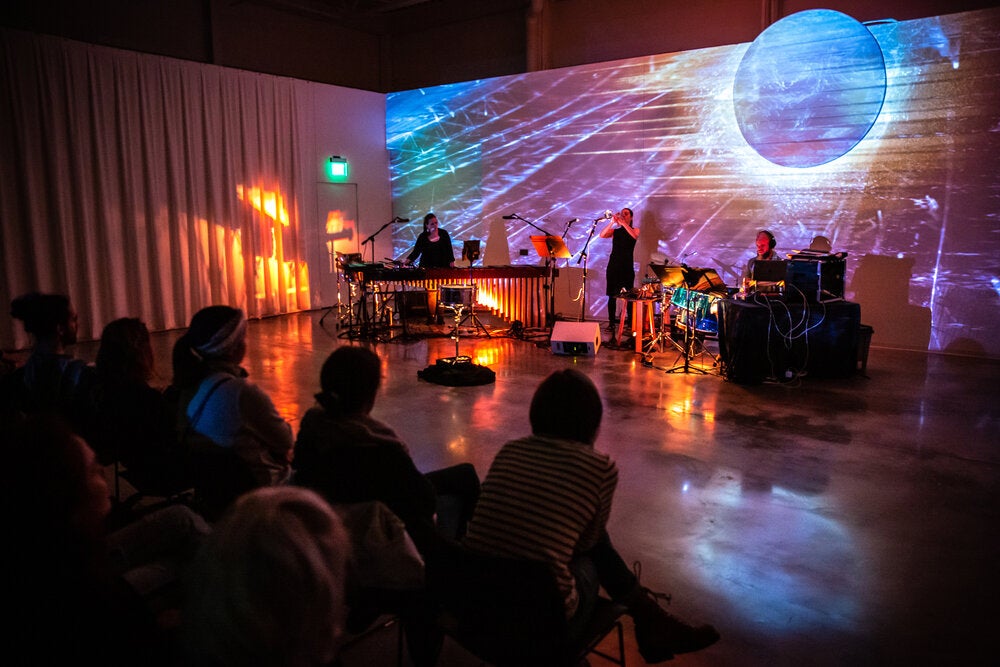The glow from the Harvard ArtLab’s radiant signage and illuminated windows—against the backdrop of the building’s industrial aesthetic—serves as a warm invitation to come inside and explore. More than a year since opening, this 9,000-square-foot interdisciplinary space has become a hub of innovation and creativity—and a conduit between the arts at Harvard and the Greater Boston community.
A laboratory for experiments in production, collaboration, and process, the ArtLab is a creative complement to the expanded Harvard ecosystem in Allston—which includes Harvard Business School, Harvard Athletics, the i-lab, Launch Lab X, the Pagliuca Harvard Life Lab, the Harvard Ed Portal, the Science and Engineering Complex (home of the Harvard John A. Paulson School of Engineering and Applied Sciences), a planned Enterprise Research Campus, and a prospective new site for the American Repertory Theater.
The ArtLab’s closely adjacent interdisciplinary spaces—along with a large, open multipurpose area—facilitate experimentation across fields in a way that hadn’t been possible previously due to the geographically dispersed nature of studio and performance spaces across Schools and departments, providing an unprecedented opportunity to shatter the boundaries of artistic genre.
But perhaps most valuable to artists is the ArtLab’s ability to function as a laboratory to incubate and grow their ideas.
“The ArtLab is the place for research and development of artwork before you see it in a museum, before you see it in the theater, before you see it on the stage,” explains Bree Edwards, director of the ArtLab. “This is R&D—a research and development space—and it plays a role in helping Harvard’s students understand the work that goes into art making. The ArtLab is also a space for coming together, swapping ideas, and collaborating across disciplines.”
Embracing the ArtLab as a vehicle for creativity and connection, donors Scott Mead AB ’77, Richard MBA ’59 and Ronay Menschel, and Diana Nelson AB ’84 and John Atwater each made gifts in honor of President Emerita and Arthur Kingsley Porter University Professor Drew Gilpin Faust, who established a University-wide Task Force on the Arts in 2007 to make the arts an integral part of the cognitive life of the University.
Inspired by Faust’s leadership and by his own artistic journey at Harvard, Mead sees supporting the ArtLab as a way to broaden artistic expression and appreciation at the University.
“The concept of creativity is to challenge orthodoxy, to challenge paradigms, and to find creative solutions. And that’s more important than ever. The world needs people who have had the opportunity to look at things differently,” explains Mead, a photographer whose work spans decades, appearing in several exhibits at London’s Royal Academy. “The ArtLab struck me as a unique opportunity to try something that hadn’t been done before. This was one of those ‘if you build it, they will come’ moments.”
“The ArtLab is the place for research and development of artwork before you see it in a museum, before you see it in the theater, before you see it on the stage.”
With their gift to the ArtLab, the Menschels built upon many years of support for innovative programs all across the University and in the arts, including the previously established Richard L. Menschel Curator of Photography at the Harvard Art Museums.
A fine arts concentrator and active member of the theater community as an undergrad, Nelson is a longtime patron of the arts at Harvard and elsewhere. In addition to giving to the ArtLab, Nelson—now a member of the Harvard Corporation—has served on several arts committees as a member of the University’s Board of Overseers.
In its first year, the ArtLab hosted 17 artist residencies that incorporated everything from dance and wearable technology to voice and architecture. The ArtLab welcomed students from across Harvard through workshops, performances, and an inaugural Wintersession intensive that featured a laser cutter as a tool for creativity.
Although the pandemic has curbed in-person events this fall, the ArtLab has pivoted to focus on supporting Harvard faculty in the production of video content for online teaching and learning, especially studio-based art and music courses.
The ArtLab will also support several faculty-led projects that are responding to the pandemic, such as four-time Grammy Award–winning musician Esperanza Spalding’s Sonic Healing Lab, which will bring students together with professionals from public health and the entertainment industry to create music that responds to COVID-19 and explores music as a tool for healing.
“The ArtLab is unique,” Edwards remarks. “I’ve had other universities contacting me to come tour the building, curious to find out what the ArtLab is all about. It’s also making an impact on the arts at Harvard—almost like a retreat where students, faculty, and artists can avoid distractions, become vulnerable, take risks, and feel safe doing so, knowing there’s something really special they’re going to do here.”

